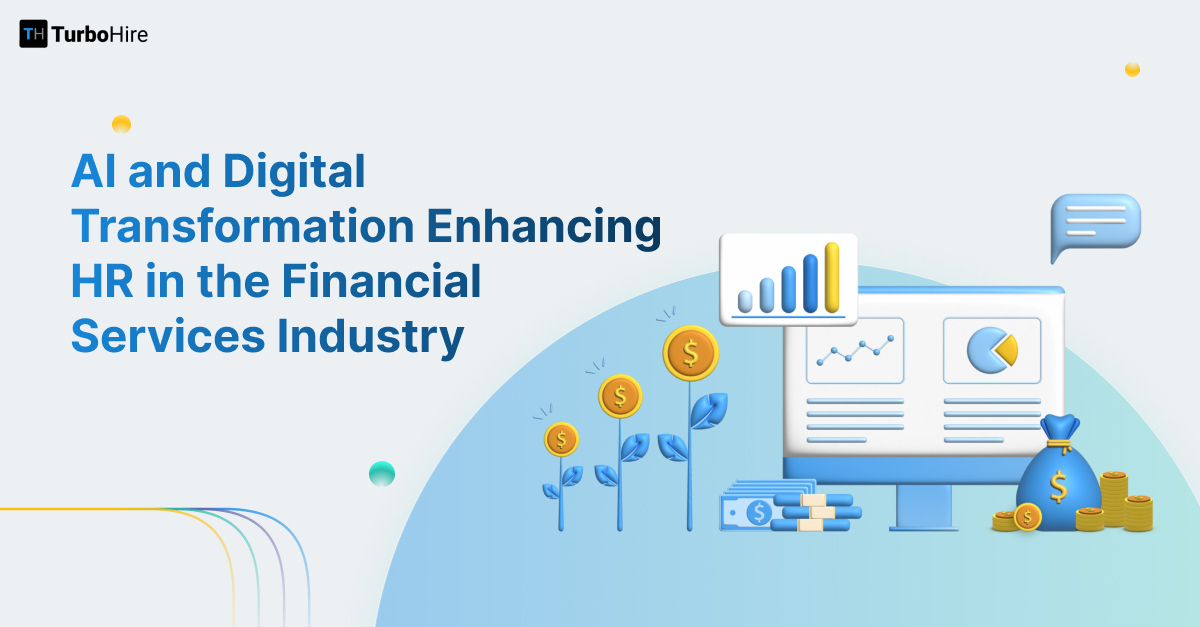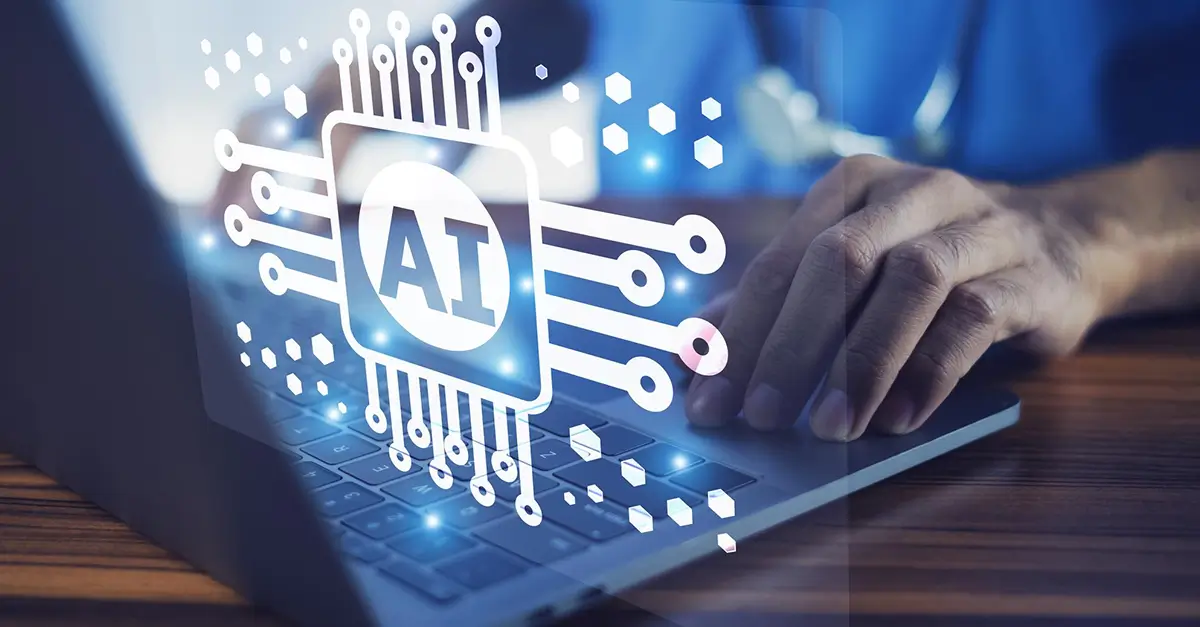Introduction
Digital transformation in HR is no longer optional; it’s a critical step for organizations aiming to thrive in today’s fast-paced, competitive environment. While the term often evokes thoughts of advanced technologies like AI in HR and automation, the cornerstone of effective transformation lies in data-driven decision-making and actionable metrics.
For HR leaders, adopting a data-driven HR strategy means moving beyond traditional practices to measure progress, drive meaningful change, and align with organizational goals. Metrics serve as a foundation for clarity and direction, enabling HR to boost efficiency, foster innovation, and create measurable value.
The Role of Metrics in Digital Transformation
HR metrics play a vital role in navigating digital transformation. Acting as a guide, they enable HR professionals to:
- Track Digital Transformation Progress: Evaluate the impact of HR technology on hiring processes, employee engagement, and retention.
- Identify Pain Points: Use HR analytics to uncover inefficiencies and address them proactively.
- Support Data-Driven Investments: Leverage metrics to build strong business cases for implementing AI-powered HR tools and other technologies.
In the realm of HR, metrics are more than just numbers—they provide insights into how well the workforce and processes adapt to digital HR solutions. By harnessing the power of metrics, HR leaders can ensure their digital initiatives contribute to tangible business outcomes.
Why HR Needs Digital-First KPIs
Traditional metrics like time-to-hire or employee turnover no longer capture the complexities of a digitally transformed workplace. Modern HR teams must embrace digital-first KPIs to measure success in a tech-driven world. Key HR KPIs for digital transformation include:
- Technology Adoption Rates: Monitor how quickly employees embrace new HR platforms and tools.
- Employee Net Promoter Score (eNPS): Measure employee satisfaction with HR digital tools and workflows.
- Productivity Metrics: Assess the efficiency gains from HR automation solutions.
- Learning & Development Metrics: Evaluate the effectiveness of digital upskilling programs.
By adopting digital-first HR KPIs, organizations can better measure the success of their digital transformation strategies. These KPIs help HR teams align their efforts with business goals while improving employee experience and engagement.
The Shift from Traditional HR Metrics to Digital-First KPIs
The rapid evolution of workplaces, fueled by digital transformation, demands a fundamental shift in how HR evaluates its impact. While traditional HR metrics such as turnover rates and time-to-hire have been valuable in assessing performance, they fall short in addressing the complexities of today’s tech-driven environments. Enter digital-first KPIs, which align HR strategies with broader business goals, offering deeper insights into employee experiences and organizational efficiency.
Limitations of Traditional HR Metrics
Traditional metrics, though foundational, face several challenges in today’s fast-paced, digital-first world:
- Lack of Real-Time Insights: Traditional metrics are often retrospective, failing to provide actionable data in real-time.
- Limited Scope: Metrics like turnover rates and absenteeism capture surface-level issues without addressing underlying causes such as disengagement or inadequate digital tools.
- Misalignment with Business Goals: These metrics don’t always correlate directly with broader organizational objectives, making it difficult to showcase HR’s strategic value.
- Inefficiency in Measuring Digital Transformation Impact: Metrics like time-to-hire or cost-per-hire don’t effectively measure the success of implementing HR automation or AI-driven tools.
Traditional HR metrics, while still useful, are not equipped to handle the dynamic demands of digital transformation in HR.
Key Metrics to Track During Digital HR Transformation
In the journey toward HR digital transformation, tracking the right metrics is essential to measure progress and ensure success. These metrics provide insights into employee satisfaction, the effectiveness of automation, and the overall impact of HR technology on organizational performance. By focusing on actionable HR KPIs, organizations can optimize their digital strategies and deliver measurable outcomes.
1. Employee Satisfaction Scores
Employee satisfaction scores are critical for understanding how well digital transformation initiatives resonate with the workforce. These scores reflect employees’ perceptions of the tools, processes, and overall work environment.
- Why it’s important: High satisfaction scores indicate successful adoption of digital HR tools and improved employee engagement.
- How to track: Use surveys or platforms that measure employee net promoter scores (eNPS) to gather feedback.
2. Automation Adoption Rates
Tracking automation adoption rates helps gauge how effectively employees are leveraging new automated processes. Low adoption rates may highlight resistance to change or gaps in training.
- Why it’s important: This metric directly reflects the success of introducing HR automation solutions in areas like resume screening, scheduling, and onboarding.
- How to track: Monitor usage statistics from HR platforms and tools.
3. Digital Training Completion Rates
As part of HR digital transformation, employees often need to upskill to adapt to new tools and technologies. Training completion rates measure the effectiveness of learning initiatives.
- Why it’s important: High completion rates indicate that employees are prepared to embrace digital-first HR processes.
- How to track: Use learning management systems (LMS) to monitor enrollment and course completion data.
4. Time Saved Through Automation
Automation is a cornerstone of HR digital transformation, and tracking the time saved can quantify its impact. This metric measures how automation improves efficiency in HR workflows.
- Why it’s important: Highlights cost savings and allows HR leaders to focus on strategic initiatives.
- How to track: Analyze task completion times before and after implementing HR automation tools.
5. Workforce Analytics Utilization
Workforce analytics is essential for making data-driven decisions during digital transformation. This metric tracks how often HR teams use analytics tools to make decisions.
- Why it’s important: Demonstrates how effectively HR is leveraging data to optimize hiring, employee retention, and engagement strategies.
- How to track: Monitor usage frequency and the outcomes of decisions influenced by HR analytics platforms.
Why These Metrics Matter
Focusing on these metrics ensures that digital HR transformation efforts remain aligned with organizational goals. By tracking employee satisfaction, automation efficiency, and analytics adoption, HR leaders can measure the tangible benefits of their transformation journey.
These HR KPIs provide actionable insights, helping organizations optimize their strategies and deliver a seamless, technology-driven employee experience. Embracing these metrics ensures a smoother transition to a digitally empowered HR function, paving the way for sustainable growth and innovation.
How AI and Data Analytics Are Redefining HR Metrics
The integration of AI and data analytics in HR is transforming the way organizations measure success. Traditional HR metrics, while valuable, often lack the depth and precision needed to navigate the complexities of modern workplaces. With AI-driven HR tools and advanced analytics, HR leaders now have access to actionable insights that are reshaping talent strategies and improving organizational outcomes.
Automating Data Collection and Analysis
Manual data collection often leads to errors and inefficiencies. AI automates these processes, ensuring accuracy and real-time availability of HR data.
- Automation in Reporting: AI-powered dashboards compile data on metrics such as time-to-hire, cost-per-hire, and engagement scores, offering real-time visibility.
- Efficiency Gains: By automating mundane tasks, HR teams can focus on strategic decision-making.
This shift allows organizations to streamline operations while making data-driven decisions faster.
Shifting Focus to Strategic Metrics
With the help of AI, HR is transitioning from operational metrics to strategic KPIs that align with business goals.
- Employee Lifetime Value (ELTV): AI calculates the long-term value of employees, considering their contributions and potential.
- Diversity and Inclusion Metrics: Advanced analytics tracks diversity ratios, pay equity, and inclusivity efforts to create a balanced workplace.
- Engagement Analytics: AI evaluates engagement through pulse surveys, sentiment analysis, and behavioral patterns, offering a deeper understanding of workforce morale.
Reducing Bias in HR Metrics
Bias has long been a challenge in traditional HR metrics. AI algorithms, when designed ethically, help reduce bias by focusing solely on data-driven criteria such as skills, experience, and performance outcomes.
- Fairer Hiring Decisions: AI tools prioritize qualifications over subjective factors, promoting diversity.
- Transparent Metrics: Data analytics makes HR processes more transparent and equitable by eliminating human bias in decision-making.
Real-Time Decision Making
AI and analytics provide real-time access to data, enabling HR to respond quickly to challenges and opportunities.
- Dynamic Metrics: Tools that track metrics like employee performance or training progress in real-time help HR teams adjust strategies promptly.
- Continuous Improvement: Real-time feedback loops powered by analytics allow for ongoing optimization of HR initiatives.
The fusion of AI in HR and data analytics is revolutionizing how organizations measure success. By enhancing precision, automating processes, and shifting the focus to strategic metrics, HR leaders can unlock new opportunities for growth and innovation.
In an era where data is king, adopting AI-powered HR tools and leveraging analytics ensures that HR remains a strategic partner in driving organizational success, delivering insights that empower decision-making and enhance the employee experience.
Tools and Dashboards for Real-Time HR Metrics Monitoring
In today’s fast-paced hiring environment, relying on multiple tools can create inefficiencies and hinder decision-making. TurboHire’s AI-powered hiring solution integrates automation into every step of the hiring process, enabling organizations to centralize operations, enhance collaboration, and make smarter, data-driven decisions.
TurboHire: Revolutionizing Hiring with AI and Automation
TurboHire streamlines hiring with AI and automation at every step. From sourcing and screening candidates to scheduling interviews and collecting feedback, the platform optimizes efficiency, significantly reducing time to hire. By centralizing all hiring activities, TurboHire facilitates seamless communication and collaboration among recruiters, hiring managers, and HR teams.
The platform’s robust analytics and data-driven insights empower organizations to make more informed hiring decisions, improving overall outcomes. With a strong emphasis on enhancing the candidate experience, TurboHire simplifies the hiring process, making it faster, more efficient, and more effective for all stakeholders.
Real-Time Analytics and Configurable Dashboards
TurboHire’s real-time analytics and configurable dashboards provide deep insights into key hiring metrics. By tracking performance and identifying bottlenecks, organizations can adjust strategies on the fly to meet business goals. The ability to visualize and interpret data in real-time ensures that HR teams remain agile and proactive, leading to optimized hiring outcomes.
Login-less, Mobile-Friendly Platform
Designed for user convenience, TurboHire offers a mobile-friendly experience that eliminates the need for repeated logins. Once logged in, users can seamlessly access dashboards and analytics, ensuring uninterrupted workflow. This feature not only saves time but also enhances productivity for HR professionals on the go.
Centralized Recruitment Activity Tracking
TurboHire’s platform centralizes all hiring activities, offering a unified view of recruitment progress. HR teams can:
- Effortlessly access candidate data and evaluate multiple profiles simultaneously.
- Track recruitment metrics by position or business unit.
- Organize and monitor all hiring parameters in one location for greater transparency.
This holistic approach ensures streamlined workflows, improves communication, and enhances efficiency across the board.
Why TurboHire?
TurboHire is more than just a hiring platform—it’s a complete hiring solution designed to address the needs of all stakeholders, from candidates to hiring managers and leadership teams. By integrating AI, automation, and robust analytics into a single platform, TurboHire enhances collaboration, improves efficiency, and delivers exceptional hiring outcomes.
Whether you are managing bulk hiring, niche roles, or campus hiring, TurboHire provides the solutions and insights needed to succeed. Its focus on data-driven decision-making, exceptional user experience, and streamlined operations makes TurboHire the ultimate partner for organizations aiming to transform their hiring processes.
Case Study: Leveraging New Metrics to Revolutionize HR Success at Motilal Oswal
Motilal Oswal, a leading name in the financial services sector, partnered with TurboHire to transform its hiring processes and leverage new metrics for HR success. By integrating advanced AI-powered tools and comprehensive recruitment modules, the organization unlocked efficiencies, enhanced candidate experiences, and optimized decision-making. This case study explores how TurboHire enabled Motilal Oswal to adopt data-driven strategies and achieve measurable improvements in their hiring outcomes.
Challenges in Hiring
Motilal Oswal faced key challenges in streamlining their hiring processes:
- Managing high volumes of candidate applications across diverse roles.
- Enhancing collaboration with external recruitment partners.
- Reducing time-to-hire while maintaining high-quality candidate selections.
- Improving the candidate application experience to align with modern expectations.
TurboHire’s Solution
Motilal Oswal embraced TurboHire’s suite of hiring solutions, utilizing its advanced AI-driven tools and integrating them into their processes for measurable results.
Comprehensive Use of TurboHire Modules
Motilal Oswal fully integrated TurboHire into their recruitment strategy, becoming one of the platform’s top users. The organization effectively utilized modules such as AI screening, candidate engagement, and interview scheduling, enabling a seamless end-to-end hiring process.
Custom Integration with Home-Grown Systems
TurboHire integrated with Motilal Oswal’s internal systems to ensure smooth data synchronization and process automation, creating a unified and efficient workflow.
Enhanced Partner Engagement
By leveraging TurboHire’s platform, Motilal Oswal streamlined engagement with recruitment partners. This accounted for 65% of their sourcing efforts, reflecting the platform’s ability to drive external collaboration effectively.
Key Metrics Driving HR Success
- AI Screening Efficiency:
TurboHire’s AI tools screened 24% of all applicants, reducing manual efforts and ensuring that only the most qualified candidates progressed. - Reduction in Interviews per Hire:
A 45% reduction in interviews per hire saved significant time and resources for recruiters and candidates alike. - Improved Candidate Experience:
TurboHire’s online application process eliminated offline uploads, resulting in a smoother and more user-friendly candidate experience. - Streamlined Recruitment Processes:
TurboHire’s modules simplified workflows, allowing Motilal Oswal to handle large application volumes efficiently. - Data-Driven Decisions:
Detailed scorecards and analytics enabled Motilal Oswal to make informed hiring decisions, aligning recruitment outcomes with organizational goals.
Results Achieved
- Enhanced Efficiency: TurboHire enabled a streamlined hiring process, saving time and effort across the recruitment lifecycle.
- Improved Collaboration: The integration with recruitment partners facilitated better engagement and sourcing efficiency.
- Optimized Candidate Quality: AI-driven screening ensured that only the most qualified candidates advanced, improving hiring quality.
- Time Savings: Significant reduction in interviews and manual effort allowed recruiters to focus on high-value tasks.
Motilal Oswal’s partnership with TurboHire demonstrates how adopting new metrics and AI-powered solutions can drive HR success. By integrating advanced analytics, automation, and real-time data, the organization transformed its hiring process to be faster, more efficient, and focused on delivering superior candidate and recruiter experiences.
This case study highlights the importance of embracing innovative metrics and technologies to stay competitive in the evolving HR landscape, showcasing TurboHire’s role as a comprehensive hiring solution for modern businesses.
Conclusion
In the ever-changing landscape of digital transformation, HR leaders play a critical role in driving both innovation and operational efficiency. By embracing data-driven HR strategies, implementing AI-powered tools, and utilizing meaningful HR metrics, leaders can streamline the talent acquisition process, foster workforce agility, and improve the overall employee experience. The key lies in aligning these efforts with the organization’s long-term goals while maintaining a focus on inclusivity, employee well-being, and performance optimization.
As organizations continue to digitize their operations, the importance of advanced HR analytics is growing exponentially. Metrics such as employee sentiment analysis, diversity and inclusion statistics, and predictive turnover rates are becoming indispensable for making informed and strategic decisions. These data-driven insights enable HR leaders to proactively address challenges, predict trends, and craft strategies that not only attract but also retain top talent.
The future of HR metrics is also shifting towards real-time, actionable insights powered by AI and machine learning tools. This empowers leaders to identify gaps, forecast workforce needs, and continuously improve processes. However, success in this domain requires a balanced approach—leveraging technology without losing sight of the human element. A human-centric approach to HR ensures that employees remain engaged, valued, and supported in their roles.
In the age of digital transformation, HR leaders who embrace AI-driven hiring solutions, focus on actionable metrics, and maintain a people-first mindset will drive their organizations to sustainable success. By adopting innovative tools and continuously adapting to changing workplace dynamics, HR can solidify its position as a strategic partner in organizational growth.

























































